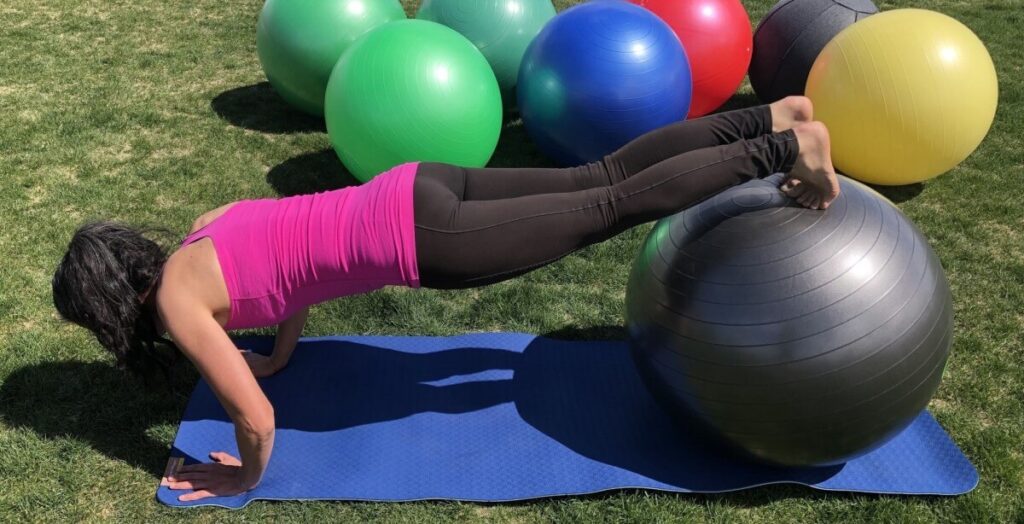Pilates has become a popular method of achieving overall fitness, offering a blend of strength, flexibility, and balance. One of the critical components of Pilates is core activation, which is essential for maintaining stability and enhancing performance during exercises. In this article, we will explore the significance of core activation, the introduction of Pilates soft ball exercises, and practical tips to incorporate them effectively into your fitness routine.
Incorporating Pilates Soft Ball Exercises into Your Routine
Adding Pilates soft ball exercises to your routine can be an enjoyable way to enhance your fitness journey. Here are some strategies for seamlessly integrating these exercises into your existing workouts.
Creating a Balanced Workout Plan
To develop a balanced workout plan, consider including a variety of Pilates soft ball exercises alongside other forms of exercise, such as strength training and cardiovascular workouts. Aim for 2-3 sessions per week dedicated to core activation and flexibility, ensuring that you also include recovery days to allow your muscles to strengthen and repair. Incorporating these exercises not only promotes physical well-being but also encourages mindfulness, as you focus on your breathing and body alignment. This holistic approach can lead to improved posture and reduced tension, making it a valuable addition to your fitness repertoire.
Adapting Exercises to Your Fitness Level
It is essential to adapt exercises to suit your individual fitness level. Beginners may find certain movements challenging; therefore, modifications such as reducing the duration of holds or using a larger ball can help. As your strength and coordination improve, gradually increase the intensity and complexity of the exercises. Additionally, consider tracking your progress with a fitness journal, noting how each session feels and any improvements you observe. This practice can not only motivate you but also provide insight into which exercises yield the best results for your body, allowing for a more tailored approach as you advance.

Understanding the Importance of Core Activation in Pilates
Core activation refers to the engagement of the muscles around your trunk, including the abdominal muscles, back, and pelvic floor. In Pilates, these core muscles are the foundation upon which all movements are built. A robust and well-activated core not only aids in performing exercises accurately but also helps protect the spine and maintain balance throughout various movements.
The Role of the Core in Pilates
In Pilates, the core is often referred to as the “powerhouse,” as it generates strength and energy for the entire body. When properly engaged, these muscles facilitate smooth transitions between movements and support proper alignment. Core stability is crucial for executing many Pilates exercises, from simple mat work to more advanced reformer movements. The emphasis on controlled breathing during Pilates also enhances core engagement, as the breath supports the activation of the diaphragm and pelvic floor, further stabilising the trunk and enhancing overall performance.
Benefits of Core Activation for Overall Fitness
The importance of core activation extends beyond the Pilates mat. A strong core contributes significantly to improved posture, enhanced athletic performance, and reduced risk of injuries. Additionally, core stability plays a vital role in everyday activities, such as lifting, twisting, and maintaining balance. By incorporating core activation into your fitness regime, you create a solid foundation that supports overall health and fitness goals. Furthermore, a well-developed core can lead to increased endurance, allowing individuals to engage in physical activities for longer periods without fatigue. This is particularly beneficial for athletes, as a strong core can improve performance in sports that require agility, strength, and coordination.
Moreover, the mental aspect of core activation should not be overlooked. Engaging the core requires concentration and mindfulness, which can enhance the mind-body connection that is central to Pilates practice. This focus not only improves physical performance but also contributes to mental clarity and stress reduction. As practitioners become more attuned to their bodies, they may find that they are better equipped to manage stress and anxiety, creating a holistic approach to health that encompasses both physical and mental well-being.
See Also: Best Pilates Ring for Beginners and Advanced Practitioners

An Introduction to Pilates Soft Ball Exercises
Pilates soft ball exercises are an innovative way to enhance core activation while adding an element of instability to traditional movements. The soft ball, typically a small inflatable ball, can be used to challenge your coordination and strengthen your core even further.
What is a Pilates Soft Ball?
A Pilates soft ball is a small, air-filled ball, generally about 25-30 cm in diameter. It is lightweight and soft, making it easy to handle while providing support for various exercises. The design of the ball allows for a range of workouts aimed at improving strength, flexibility, and coordination, particularly targeting the core muscles. Its versatility means it can be used for a multitude of exercises, from gentle stretches to more dynamic movements, making it suitable for practitioners of all levels, including beginners and seasoned enthusiasts alike.
Why Use a Pilates Soft Ball in Your Routine?
Integrating a soft ball into your Pilates workouts can significantly enhance your core activation. The instability created by the ball forces your core muscles to work harder to maintain balance and control. This added challenge leads to more effective workouts, as it encourages engagement of deep stabiliser muscles that may not be actively used during traditional exercises. Furthermore, using a soft ball can also promote better posture and alignment, as it encourages awareness of body mechanics during movement. As you navigate through various exercises, you may find that your overall body awareness improves, allowing for a more mindful approach to your fitness routine.
In addition to core strengthening, Pilates soft ball exercises can also aid in rehabilitation and injury prevention. The gentle nature of the ball allows for low-impact movements that can be particularly beneficial for those recovering from injuries or looking to build strength without placing excessive strain on the joints. By incorporating the ball into your practice, you can gradually increase your range of motion and flexibility, which is essential for maintaining a healthy and active lifestyle. Moreover, the playful aspect of using a soft ball can make workouts more enjoyable, encouraging consistency and engagement in your fitness journey.

Top Pilates Soft Ball Exercises for Core Activation
To effectively engage your core with a soft ball, consider incorporating the following exercises into your routine. These moves provide a comprehensive way to challenge your core and improve overall strength. Engaging in these exercises not only enhances your physical fitness but also promotes better posture and stability in daily activities, making them an essential addition to any workout regimen.
The Pilates Soft Ball Plank
To begin this exercise, place the soft ball beneath your forearms while in a plank position. Ensure your body forms a straight line from head to heels. Engage your core and hold this position for 20-60 seconds. This exercise not only activates the core but also builds overall stability. As you progress, you can increase the duration or try lifting one leg at a time to further challenge your balance and strength. This variation not only intensifies the workout but also engages your stabilising muscles, enhancing your overall performance in various physical activities.
The Soft Ball Squeeze
For the soft ball squeeze, lie on your back with your knees bent and feet flat on the floor. Place the ball between your knees and gently squeeze while lifting your hips off the mat. This movement strengthens the inner thighs and the lower abdominal muscles, improving core engagement. To maximise the benefits, consider adding a small pulse at the top of the lift, which will increase the intensity and further activate the glutes and pelvic floor muscles. This exercise is particularly beneficial for those looking to improve their stability and control, which are crucial for a range of sports and physical activities.
The Pilates Ball Pass
To perform the Pilates ball pass, lie flat on your back, holding the ball in your hands. Lift your legs to a 90-degree angle while simultaneously lowering the ball to the floor above your head. Then, bring the ball back to your knees as you lower your legs. This exercise effectively targets the entire core and enhances coordination. For an added challenge, try to perform the movement slowly and with control, focusing on the connection between your upper and lower body. This mindful approach not only improves strength but also enhances your body awareness, making it easier to engage your core in other exercises and daily movements.
Tips for Effective Core Activation with Pilates Soft Ball Exercises
To maximise the benefits of Pilates soft ball exercises, consider these helpful tips that can ensure effective core activation during your workout.
Maintaining Proper Form During Exercises
Proper form is crucial for maximising your core activation. Ensure that you maintain neutral spine alignment, especially during exercises like the plank and ball pass. Focus on squeezing your core muscles while performing each move to avoid unnecessary strain on your back. It’s also beneficial to engage your glutes and shoulders, as this can provide additional support and stability, allowing for a more effective workout. Remember, slow and controlled movements are key; rushing through exercises can lead to poor form and diminish the benefits of your practice.
Maximising Core Activation in Each Exercise
As you perform each exercise, concentrate on engaging the core throughout the movement. This can be achieved by imagining pulling your navel towards your spine, which enhances stability. Additionally, breathe deeply and steadily, as this will help facilitate muscle engagement and control. Incorporating visualisation techniques can also be advantageous; picture your core muscles working together as a cohesive unit, which can enhance your focus and connection to the movements. Furthermore, consider integrating variations of exercises to challenge your core in different ways, such as incorporating side-lying or seated positions with the soft ball, which can activate different muscle groups and improve overall core strength.
Conclusion
Incorporating Pilates soft ball exercises into your fitness routine is an excellent way to enhance core activation and improve overall strength. By understanding the importance of core engagement, utilising a soft ball, and practising effective exercises, you can benefit from increased stability, better posture, and a more robust body. Remember to focus on form and adapt activities to your fitness level to achieve the best results.
